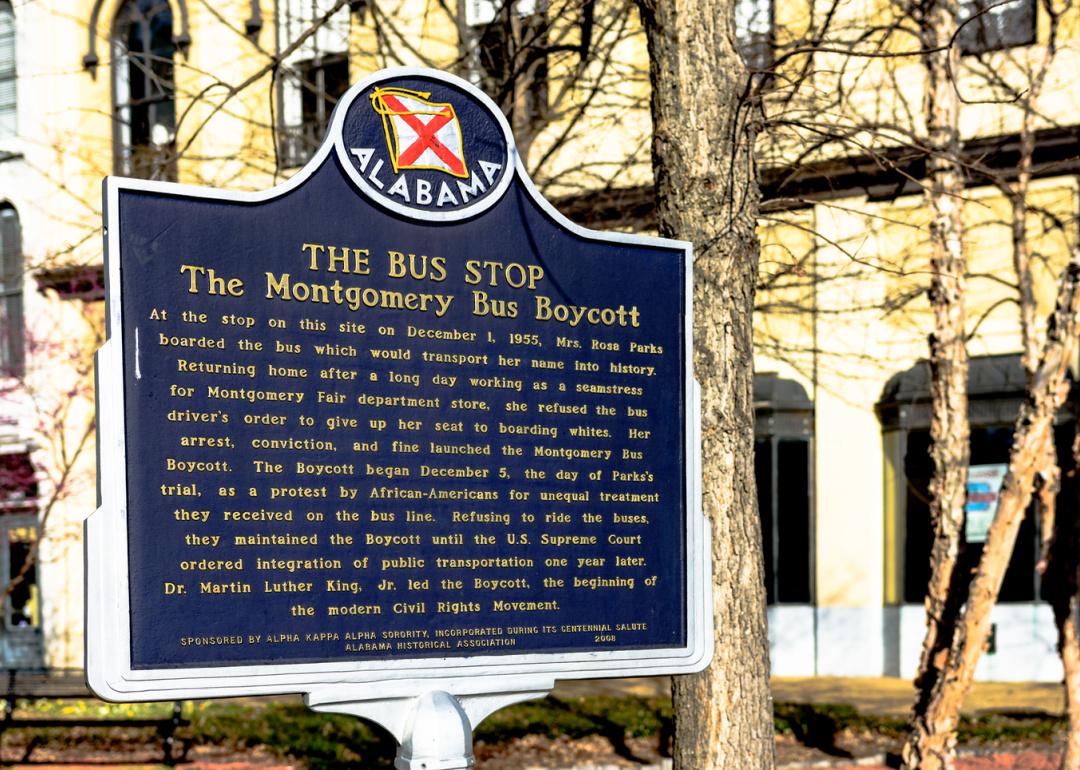
Explore historic sites commemorating Black history in New Mexico
Explore historic sites commemorating Black history in New Mexico
The legacies of influential Black Americans have not always been acknowledged, so it's not uncommon that modern-day residents may overlook the historic sites of their own cities.
While some historical Black figures in the U.S. are more well-known than others, there are in fact thousands of people dating back generations to 17th-century slavery who left traces of their visions and impacts all across the country. Whether prominent figures such as Robert Abbott, who founded one of the largest African American newspapers in the country, or more under-the-radar originators such as Obrey Wendell Hamlet, who cultivated unique vacation experiences in the Rocky Mountains, one thing's for certain: There is far more uncharted Black history in this country than charted.
Stacker identified historic sites commemorating Black history across 47 states, using the National Register of Historic Places. North Dakota, Vermont, Hawaii, and Wyoming did not have Black historic sites listed on the registry. While some states, especially in the South, are home to many sites central to the civil rights movement, Stacker listed the total sites in every state and the names of three historic sites where available. You can visit the full registry of 232 historic sites and explore the Civil Rights Trail to learn about additional locations across the U.S.
Read on to explore and learn about the historic sites celebrating Black history in your state, or read the national story here.
New Mexico by the numbers
- Sites commemorating Black history: 4 (2 with state significance, 1 with national significance)
- Hawikuh (Zuni)
- Lincoln Jackson School (Clovis)
- Dunbar, Paul Laurence, Elementary School (Vado)
The Lincoln Jackson School saw its early stages in 1924 and was the primary public elementary school in Clovis, New Mexico, to provide education solely to African American students. Classes were held in a church chapel until 1930 before relocating. Mrs. Ida O. Jackson was a well-liked school teacher after whom the school was partially named.
Continue reading to see which sites commemorate Black history in other states in your area.
Arizona
- Sites commemorating Black history: 4 (0 with state significance, 0 with national significance)
- Alston, Dr. Lucius Charles House (Mesa)
- Phoenix Union Colored High School (Phoenix)
- Swindall Tourist Inn (Phoenix)
Dr. Lucius Charles Alston was the first African American physician to practice in Mesa. He treated patients of all ethnicities and did not discriminate. Dr. Alston initially treated patients from his home, which remained a prominent fixture until his death in 1958.
Colorado
- Sites commemorating Black history: 13 (3 with state significance, 1 with national significance)
- Winks Panorama (Pinecliffe)
- Fort Lyon (Las Animas)
- Ford, Barney L., Building (Denver)
In the early 1920s, entrepreneur Obrey Wendell "Winks" Hamlet decided to open a lodge where the Black middle class could enjoy leisure time and experience the outdoors with their loved ones. Wink's Lodge, also referred to as Wink's Panorama, soon became a go-to destination for Black travelers and the Black elite such as Lena Horne, Zora Neale Hurston, and Duke Ellington. The lodge held significance as being a rare mountain destination experience during a time of unrest. Hamlet managed the lodge until his death in 1965, and Wink's Panorama closed soon after.



